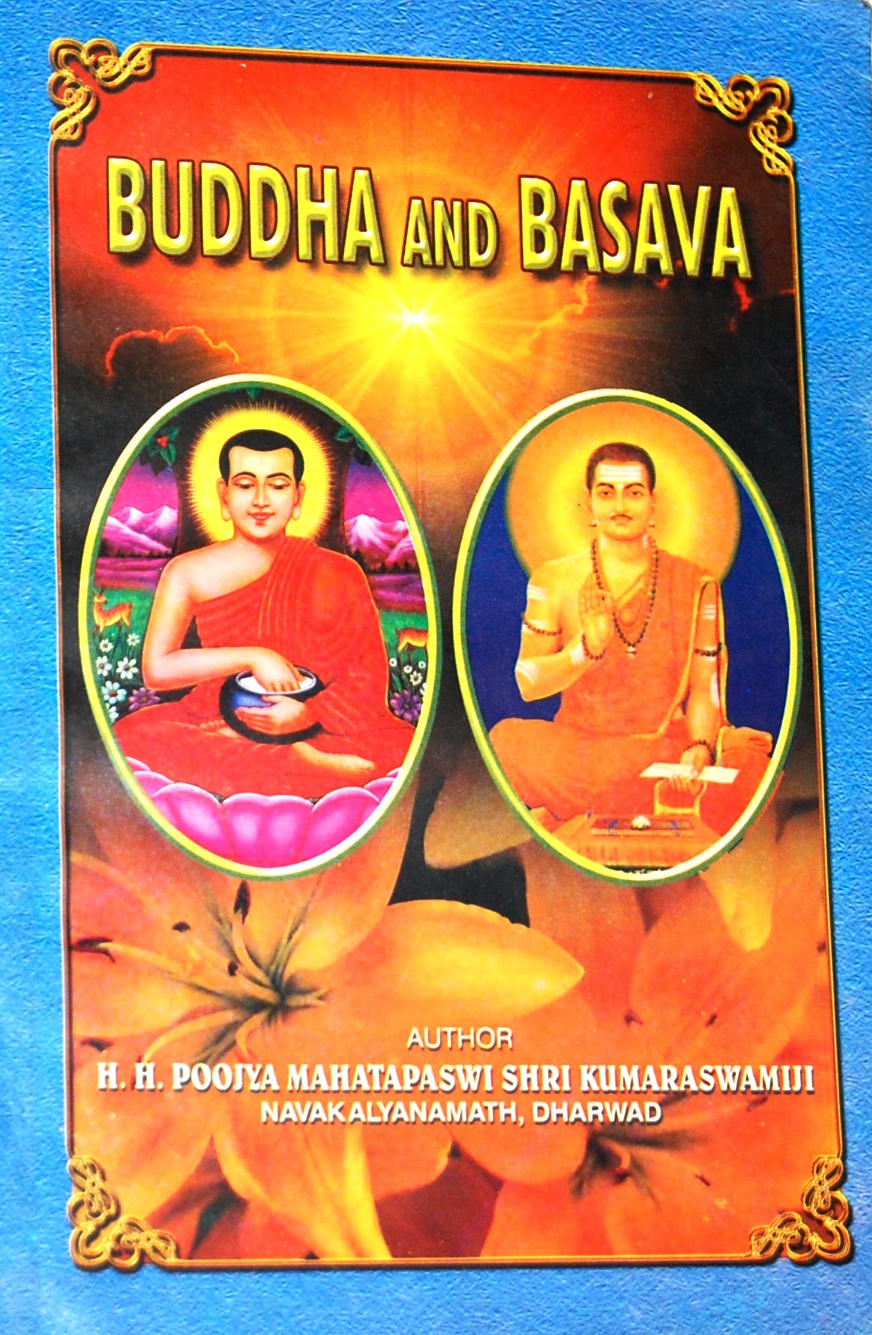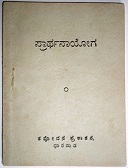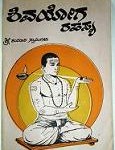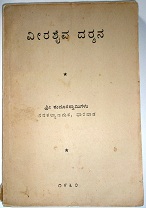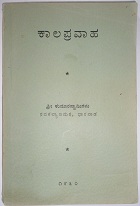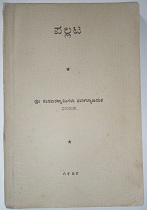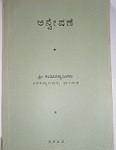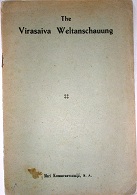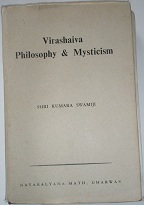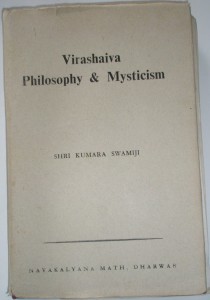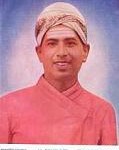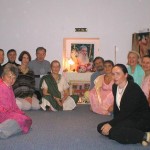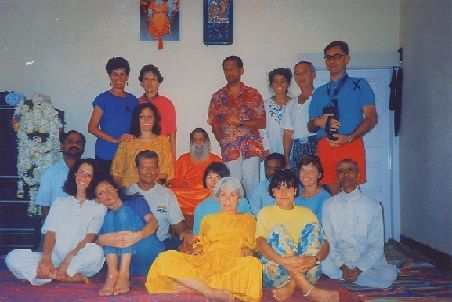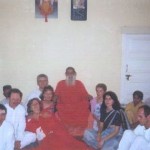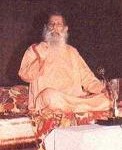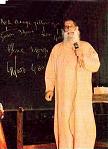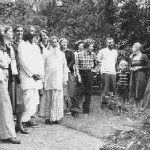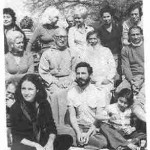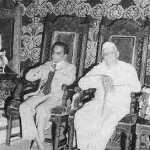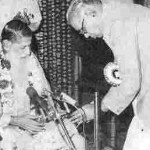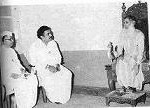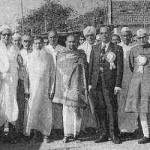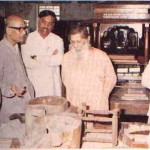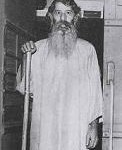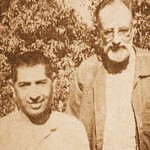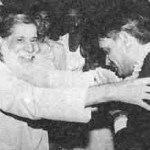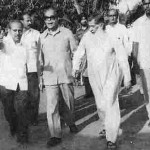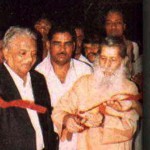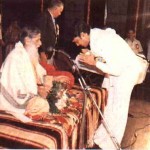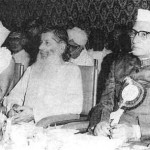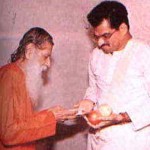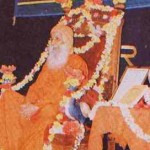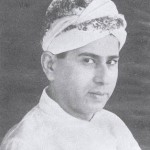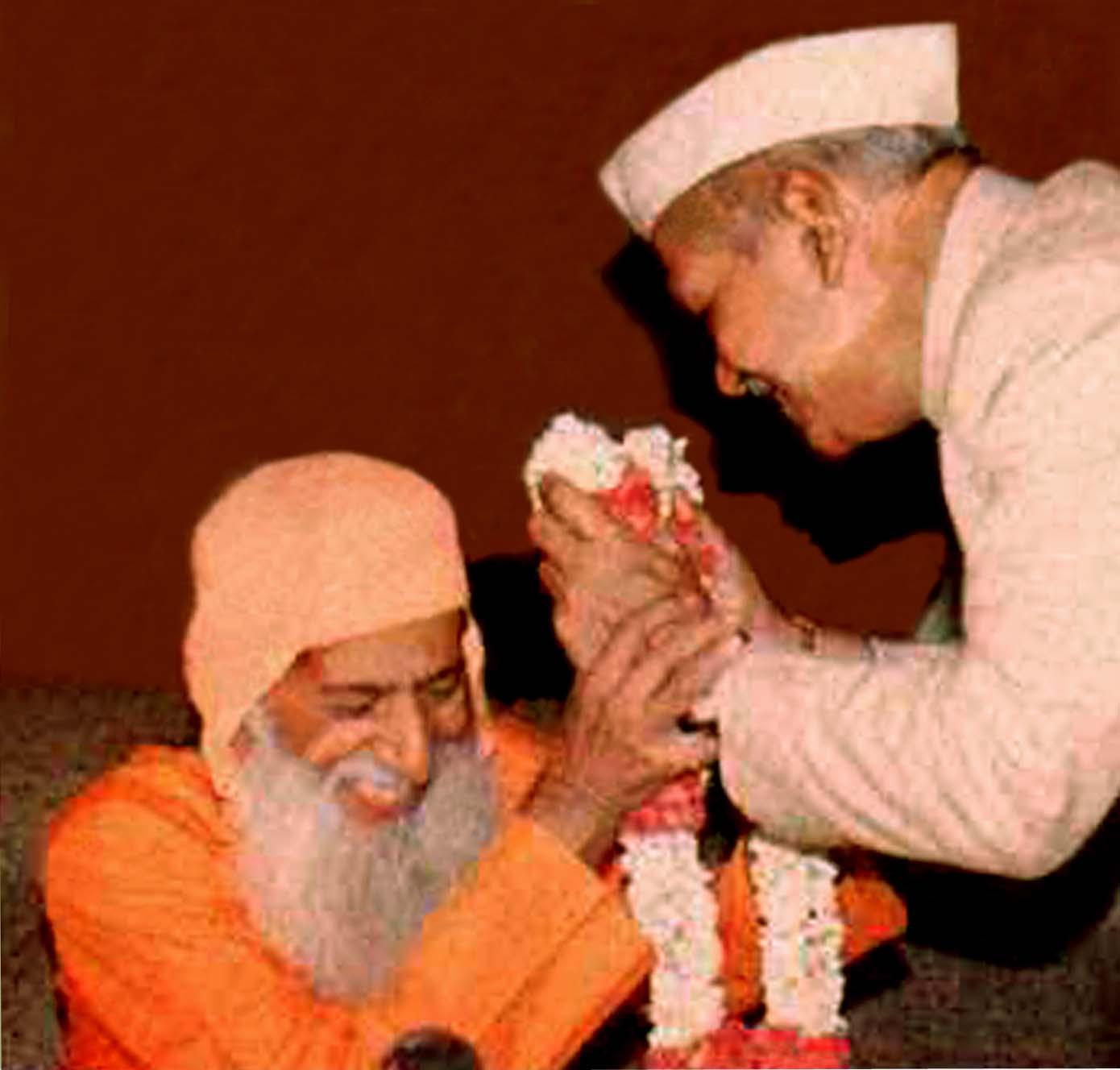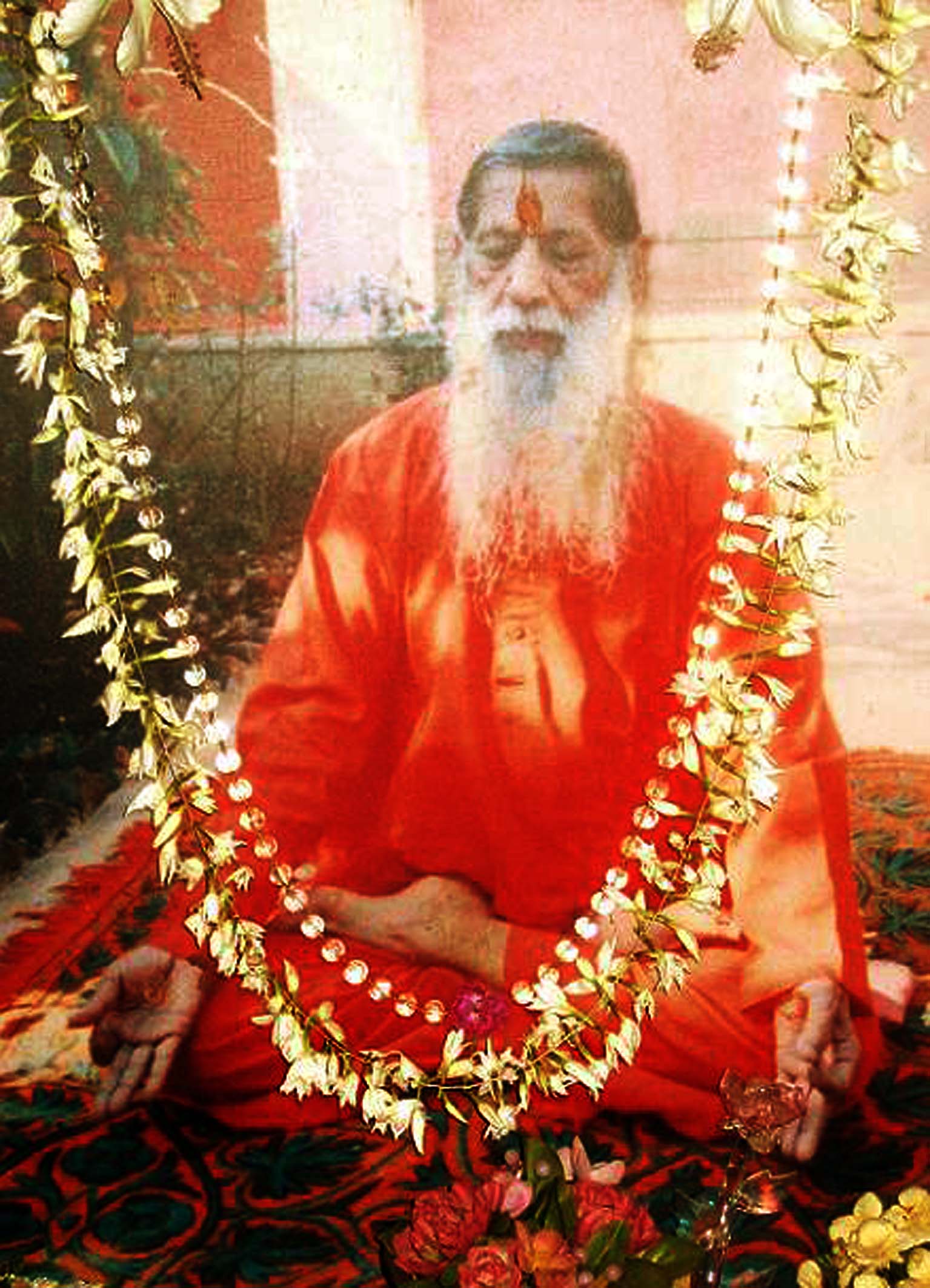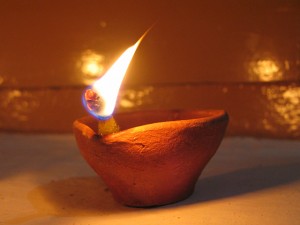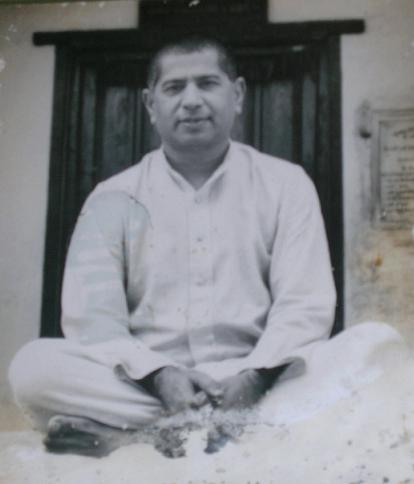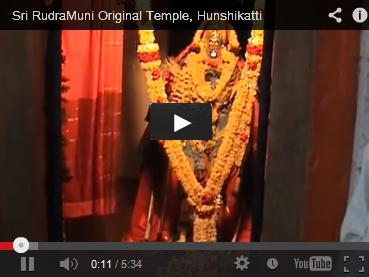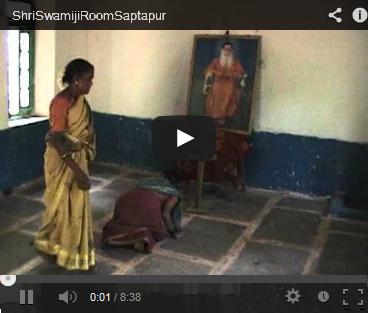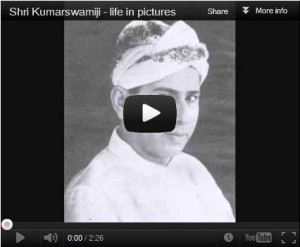One of monumental works that Basava did was the formation of the institution named Anubhava Mantapa, the Academy of the experience. This Academy was in a sense a true university, for it was a community of men and women, of high and low, irrespective of caste, creed and rank, bound together by zeal for spiritual knowledge. It was not mere lecture hall although a formal discourses were often held. Its function was to sense the soul, to turn it to light, but the soul must see light for itself. Basava attached great importance to the contact between disciples and masters than to their social intercourse among themselves.
Buddha raised his voice against caste and priest-craft and induced people to think freely and to act rightly. “The people had sunk into such a deplorable depths of superstition and indulgence that a great spiritual leader was necessary to lift them up and open their vision to the consolations of a virtuous life as distinct from the false hopes derived from cruel rituals. It was the gradual submission of the ruling class to the creed of the priests that had brought the whole society to its knees and a teacher competent to influence and rouse the kings could alone have succeeded in altering the situation. Such an inspired saviour appeared in Buddha from among the royal class itself and succeeded in restoring to the nation its capacity to feel and think and ac untrammeled by the myths of priest-craft.”
After Buddha it was Basava who raised a cry of revolt against caste and priest-craft. To him they were the chief targets against which he directed his artillery fire. He pertinently asked, what have they stood for except social and religious injustices, inequalities and exploitation? What have they meant except the intellectual and moral stagnation of the masses, the emasculation of the country forced to live in an atmosphere of inferiority, disunion and the submergence of all true religion in a flood of rites and rituals? These were the unpalatable statements that made the then orthodoxy frown and fumble. But they are just unpleasant. We have the verdict of history before us and the experience of century’s priest-craft dug the grave of the mighty Hindu empires in the past, and is responsible for all the strife and dissension of the present. Basava instinctively felt that caste, priest-craft and idolatry were responsible for the disintegration of Hindu society and its downfall. The forces of exploitation against which Buddha fought were as active in the 12th century as they were in the 6th century B.C. Basava’s task, like that of the surgeon, was to lay bare the seat of the disease. He therefore pierced into the sensitive depths of the popular ideologies, utterly regardless of the wincing or even the cries of pain. But he was cruel only to be kind.
The social and cultural conflicts which had been going on in India from ancient days were stimulating a new ferment within the Hindu society. At the time of Basava there were apologists of caste and priest-craft, just as they are even now, who had been giving a new interpretation to the old religious practices and forms of thought. But Basava with a courageous frankness acknowledged the prevailing evils of the Hindu society and suggested ways and means of a new orientation. His suggestions may be stated as follows:
(1) that the Hindu society should leave its smug satisfaction and become critical of itself, it if desires so advance;
(2) that for the advancement of the country the Hindu society has to discard caste, idolatry and mythology, and reinstate in their lace brotherhood, monotheism and worship in spirit;
(3) that unity can only be achieved by social and cultural rapprochements;
(4) that a revolt against the exploiting forces is necessary for the security of the social democracy;
(5) that the reforms should be aimed at creating a moral and social reformation.
Basava was an advocate of strict monotheism. He was against Vedic priest-craft as well as Agamic temple-craft. He supported neither the naturalism of the Vedas nor the polytheism of the Agama; but maintained a consistent monotheism. Naturalism is the worship of the powers of nature as beings, generally beneficent, with only a very few evil ones such as darkness and draught. This naturalism gravitated towards henotheism which is that of extolling the particular deity invoked at the time above all others, and ascribing to it the same actions and functions which are named as belonging to this or that god. This is not monotheism. But the stringent cry o Basava that there is but one God who is to be sought not in the temples nor in the rituals, but in the righteous acts of man was enthusiastically hailed by the then distressed multitudes. That the heart is common to all and the God seated in the heart is one in all, this was the monotheism preached by Basava. The accommodating nature, the democratic policy and the monotheistic creed all combined to make the new faith, the progressive and popular religion of the masses. If it is true that the religious consciousness of any county or community reflects itself into its political system, the absence of a strictly monotheistic creed in India crystallized into the absence of a centralized state. M.N.Roy makes a pertinent remark, “Natural religion, as for example of the Vedas or of the Greek mythology, is the deification of the diverse phenomena of nature as objects of worship. It is the religion of the decentralized tribal society. Monotheism the belief in one God rises as the ideology of a centralized sate. The worship of a glittering galaxy of gods, all equally powerful idealized human beings, is the spiritual expression of man living in the state of primitive democracy. The absence of a strictly monotheistic cult in religion reflected the political disunity of India. The social forces favouring the establishment of a centralized state having failed to attain a sufficiently high level of development, the growth of a strictly monotheistic faith was impossibility. The first centralized state in the history of ancient India was the Empire of Ashoka and that happened under the revolutionary banner of Buddhism. That also disintegrated, revealing the lack of an abiding social cohesion. The outstanding feature of the political history of ancient and mediaeval India is the absence of a centralized state. Hence India never experienced political unity and did not develop a strictly monotheistic religion.”
In the 12th century the status of woman was very low. She was classed among the untouchables and was on a level with chattel. She could not enjoy the religious and social rights; to speak of her economic rights was an act of sacrilege. Basava saw that in human economy man and woman were inseparably connected. He laid great stress on family life and looked upon woman as an angel of the family. He raised her status equal to that of man in society. He removed all barriers of caste, creed and sex, position and rank between man and woman; so much so that a host of woman writers with an independent outlook upon life and with freedom of movement, appeared on the scene, of whom Akka Mahadevi was the beacon light. Neither old Judaism nor even Christianity did anything to ameliorate the position of woman to the extent that Basava did. If anybody studies the book of Genesis, one will find that the woman was made first for the man, secondly after man and thirdly out of man’s body. These three factors are responsible for the woman’s inferiority of position. Rousseau echoed the same voice when he said, “Woman and man were made for each other, but their mutual dependence is not the same. The men depend on the women only on account of their desires and their necessities; we could subsist better without them than they witout us.” J.L.Davies sums up the position of woman thus, “The history of women from the dim beginning until the end of the 18th century shows no absolute progress whatever; at times there are modifications, ameliorations of their social status; but as a whole women did not benefit except at second hand, by all the progress, the middle ages, if not ancient history, lasted far longer than they did for society as a whole, and for them the date which corresponds in importance to that of the discovery of America, the capture of Constantinople or the Reformation, is 1774; and the event is the publication of the vindication of the rights of women.”
Basava denounced with great vehemence the age-long injustice meted out to women in Hindu society. To him the subjection of woman was as much a blot on Hinduism as untouchability. If Hindu society were to become a progressive unit in human evolution, woman should be treated as the equal of man. With this motive in view he vindicated the rights of woman both ethically and economically. He said that the difference in sex and physical forms would denote only difference in function and not difference in status. Woman is the complement of man and not his inferior. Basava agrees with Gandhiji when he says, “To call woman the weaker sex is a libel, it is man’s injustice to woman. If by strength is meant brute strength then indeed is woman less brute than man. If by strength is mean moral power, then woman is immensely man’s superior. Has she not greater intuition, is she not more self-sacrificing, has she not greater power of endurance, has she not greater courage? Without her man could not be. If non-violence is the law of our being, the future is with woman.”
Basava was a social thinker and the history of social thought dates back to ancient times. Long before the Ten Commandments were written long before the ancient world emerged from the obscurity of primitive legend, man worked out codes by which he lived, and without which human society could never evolve. But those codes were never written down; they developed before man learned to write whatever we know about them. We have learned from anthropologists who have studied primitive life in person, living with the natives to discover what semblances of law and morality exist among them. By the time man acquires the ability to write, his social intelligence is already developed to the point where he is able to frame his social concepts and moral ideals in forms which even to this day remain a testament to his advancing social vision. The fact that in practice he never realizes what he proclaims in theory, does not invalidate the moral important fact that he has begun to develop an outlook on life which is becoming moral and more impregnated with a sense of social responsibilities and aspirations.
The Ten Commandments and the ten characteristics of Dharma are the best illustrations of the evolution of a social outlook among ancient peoples. In Hammurabi’s code we find the class aspects of ancient society stressed more conspicuously than in the other documents. On the part of all peoples in these days, there is the same struggling effort to find some scheme by which man’s urgency to become a social animal can be reconciled with his anti-social individualistic tendencies, which always play havoc with his social behaviour. Although class differences determine, to a great extent, the respective values of the period, as evidenced in religion and politics, there is always, in the case of teachers and prophets, a classless point of view, an ethical ideal which, however much it fails of its purpose, is more concerned with society than class, and which finds its aspiration in a social outlook upon the destiny of the race.
The Hindus, the Hebrews and the other ancient races conceive of social thought mainly in ethical terms. With the Greeks social thought becomes an intellectual consideration, to be weighed and measured by rational conceptions and shibboleths. Plato and Aristotle gave convincing from to the Greek ideas on the subject. Plato, in his Republic, anticipates many of the ideas of modern times, while Aristotle with his Essay on Politics, sets the pace for political argumentation. In St. Augustine’s City of God, we are confronted with the picture of what the Middle Ages conceived of as a social ideal. He catches the spirit of the epoch and translates it into sociological form in his City of God, he realizes better than any of his contemporaries that Catholicism is not just an other-worldly concept, but a this worldly thing which can assume meaning only when men and women decide to give body to its dream. At the end of the Middle Ages, modernity supersedes mediaevaism, which means that unity of vision is supplanted by diversity of outlook; and into the field of social theory a number of new figures now appear, each contributing a new insight as to what society was dominant, whereas at the Modern Age, several concepts emerge most of which are centrifugal rather than centripetal in direction.
However divergent the concepts may be, the ultimate purpose of social organization, in, human life, is to assume the secure basis for an ordered expression of individual capacity, and for the satisfaction of the needs of man in non-economic directions. The effort of mankind in this direction belongs to the interest and activities that provide a constant basis for liberation of the values of intellectual, aesthetic and spiritual life. Every significant prophet has asserted that the material is instrumental to the spiritual. Nominally at least this idea is accepted by every civilized community. The transfer of the burden of material production from human muscles to steam, electricity and atomic energy is about to make possible the effective actualization of this ideal. Needs, wants and desires are always the moving force in generating activity. When these wants are compelled by force of condition to be directed by the masses into obtaining the means of sustenance, what should be a means becomes perforce an end in itself. Up to the present the new mechanical forces of productions which have the means of emancipation from this state of affairs, have been employed to intensify and exaggerate the reversal of the relation between means and ends. It is this perversion that is the cause of the continually growing social chaos and strife. Its termination cannot be effected by preaching to individuals that they should place spiritual ends above material means. It can be brought about by organized social reconstruction that puts the results of mechanism of abundance at the disposal of individuals. The actual corrosive materialism of the present times does not proceed from science, but it springs from the notion that the creative capacities of individuals can be evoked and developed only in a struggle for material possessions and gains. It is here that the spiritual message of the prophet comes with a convincing force.
The question that faces humanity is whether we should surrender our professed belief in the supremacy of spiritual values, and accommodate our beliefs to the predominant material orientation or we should through organized endeavour institute the socialized economy of material security and plenty that will release human energy for pursuit of higher values. Since liberation of the capacities of individuals for free, self-initiated expression is an essential part of socialism, it must will the means that condition the achieving of its ends. Regimentation of material and mechanical forces is the only way by which the mass of individuals can be released from regimentation and consequent suppression of their spiritual and cultural possibilities. Socialism can be true to its ideals only as it takes the course that leads to their attainment. The thing which now dampens social ardor and paralyses its efforts is the conception that liberty and development of individuality as end, exclude the use of organized social effort as means. Here again we must revert to the old saying which the prophets preach by saying that there must be a rapprochement between means and ends.
The Veershaiva philosophy holds the reality of God, of soul, and of the universe. Basava also postulated the reality of God, soul and universe in which man has to work. His was a philosophy of bold action, not of idle musings. The Shaiva philosophy postulates that something cannot come out of nothing or become nothing. As something and nothing are incompatible, the truth of this postulate will be easily conceded. If it is so easily accepted, it may be asked why it should be made a postulate. The reason is that there are philosophies which make the universe itself an illusion and which do not admit the reality of anything physical and mental, and there are others which admit the reality of the material universe, but maintain creation ex nihilo. The existence of such philosophies necessitates the enunciation of the postulate and the explanation of its implications. The disappearance of water by evaporation or electrolysis and the appearance of the dew drops on leaves lead an ordinary man to the belief that something can become nothing and something can come out of nothing. Similarly, the involution and evolution of the universe is likely to be regarded as an instance of something becoming nothing and coming from nothing. In fact what really happens is only a change of relationship between particles that go to make up the world.
Hence Shaiva philosophy regards the world-process as something real and not as an illusion. Since change takes place in the relationship of the components of a substance, it follows that whatever has no components cannot undergo change. This leads us to the principle that whatever is further unanalysable cannot undergo any change. That unanalysable something is God which is unchangeable and perfect. God is therefore the source of all knowledge and power; he is knowledge, not the knower; he is love, not the lover. It is the individual soul or Jiva that is the knower, doer and enjoyer. If in release the soul is not the enjoyer, who else is there to enjoy? The instance on the centrality of Jiva is the distinctive feature of the Shaiva school. It accepts non-dualism, but it is a non0dualism not of substance, but of essence. God and soul, are different entities but non-different in nature. This mysterious relationship between God and soul has been expressed as Linganga-samarasya in Veershaivism.
This realistic philosophy strikes at once at the root of the dreamy nature of the external world and dubious nature of one’s own mind. It makes the knowledge of the external world and of one’s own mind a reality, and it also admits the degrees of reality. Swami Dayananda also propounded the realistic philosophy giving us the reality of God, soul and world. He refuted Nihilism and Mayavada and held that the only function that all philosophies have to perform is to have true knowledge. Basava also said that true philosophy must have an educative value. Hence the philosophy as adumbrated by the Shaiva school and as preached by Basava and Dayananda may be stated as follows: God is the creator and the best way of obeying his commands is to be creative. God is all love and the true way of serving Him is to serve humanity. True renunciation does not lie in self-immolation, but in suffering for the sake of others. The salvation of man lies not in his ignoring others, but in his effort to bring about the salvation of all. The world is a great school where one has to evolve one’s potentialities by labour and love.
One of monumental works that Basava did was the formation of the institution named Anubhava Mantapa, the Academy of the experience. This Academy was in a sense a true university, for it was a community of men and women, of high and low, irrespective of caste, creed and rank, bound together by zeal for spiritual knowledge. It was not mere lecture hall although a formal discourses were often held. Its function was to sense the soul, to turn it to light, but the soul must see light for itself. Basava attached great importance to the contact between disciples and masters than to their social intercourse among themselves. Man is a social being and mutual education is one of the great and incessant occupations of human society. The social intercourse between a large body of persons congregated together in the pursuit of knowledge is the very nucleus of university life. As a consequence of long intercourse and a common life spent upon the object, a light is suddenly kindled from a leaping spark which, reaching the soul, finds nourishment for itself. Knowledge is a personal thing and it depends upon a personal contact. One may study the general principles from books at home, but the tone, the colour, the air the life which makes it live in us, one must catch all these from those in whom it lives already. The present day university where we go to get knowledge is books and lectures. Aldous Huxley regards lecture as anachronism, as a legacy from the Middle Ages when books were scarce. Quiller Couch opines that lectures in modern universities occupy a place out of all proportion to their value and importance. It was Newman who emphasized personal contact with a great personality as blessing which a university education can bestow.
If Anubhava Mantapa were a university, does it fulfill the conditions which a university demands? Let us see. In the first place, a university is a corporate body � an assemblage of those interested in the pursuit of knowledge. Secondly, the business of a university is to diffuse and extend knowledge in all its branches. Thirdly the aim of the university education is culture. In the Anubhava Manatapa there was an assemblage of about 300 persons all congregated for the pursuit of spiritual knowledge. All the members looked upon each other as of equal importance. It was an association of aspirants or rather students, some more advanced than others. The business of a university is to teach but teaching implies learning. The spirit of learning is much better than the spirit of teaching, because �the vanity of teaching often tempts a man to forget that he is a blockhead’. The most inspiring teachers are therefore the most enthusiastic learners. Once the teacher ceases to be a student his readiness to accept new ideas is reduced to a low level, his enthusiasm flags, with the result that he moves in a settled groove, regarding his work as druggery and to be a source of inspiration to younger men. In the Anubhava Manatapa all members were students ready to acknowledge their slightest faults and were willing to learn from others the good lessons that might help them in the spiritual path. The institution was not merely spiritual, it also tackled the problems of economics, of state craft, of literature, of social amelioration, of course in a rudimentary form, Theology or religion occupied much space in its curriculum so much so that it overshadowed intellectual activities.
The aim of university education is culture. Newman maintains that a liberal education is useful in that it tends to good or is instrument of good. “not useful in any low, mechanical, mercantile sense, but as diffusing good, or as a blessing, or a gift, or a power, or a treasure, first to the owner, then through him to the world.” For the modern educationist training of intellect seems to be the end of education. The apprehension of truth involves the operation of complicated mental processes, which are developing by use and training. This process of training by which the intellect is disciplined for its own sake, for the perception of its own proper object, and for its own culture, is called liberal educationist, is the power of the highly trained mind the full development of which can be secured by the university education. Narrowness and shallowness are not marks of the well educated man, who always see things in their perspective. It is supposed that through the medium of university education narrowness and angularity are rounded off, rational and comprehensive views prevail, a broad and cultured outlook on life is encouraged. It is clear from this that the aim of university education is more material and intellectual rather than moral and spiritual. To the modern man culture seems to be conventional, and as long as conventional requirements are positive factors in social life and progress, their claims is recognized by the universities.
But culture is not merely conventional; it means something more than this. What is culture? Culture means the cultivation of mind and mind has a tendency to follow the line of least resistance. But to raise it to the level of receiving what is desirable and to the level of radiating the Divinity which is already within is indeed a glorious task. To cultivate the mind along the lines of truth, love and non-violence is true culture. A noble mind gives and forgives. To develop such nobility of mind is the one aim of culture. Culture then aims at developing the moral virtues such as love, compassion, forgiveness and non-violence. It is on the strength of these moral virtues that one can make a distinction between civilization and barbarism. Otherwise, there is no standard for measuring progress and no ground to believe that civilization is better than barbarism.
Character education was the aim of Anubhava Manatapa and character education aims at the development of a sound personality. The educational authorities, responsible for the disciple of the pupils, should bring out those qualities in them which would contribute to the development of integral personality. Of those qualities the Greeks postulated the philosopher as the ideal man. In the Middle Ages, monastic scholar became a model. The British education aimed at producing gentlemen, while the contemporary world is labouring at developing good citizenship and effective workmanship. In India and China the ideal man had been the sage. In character building Basava laid great emphasis on Nirvanchana which means sincerity and he condemned self-deception and double-dealing leading to the destruction of spiritual faculties. Curiously enough Chinese culture holds Cheng, which may be translated as sincerity, as the ideal of character building. But credit goes to Confucius who developed the potentialities of sincerity, for he visualized that knowledge, magnanimity and courage would proceed from it. There were centers of moral and spiritual discipline in ancient and mediaeval times. The Academy in ancient Athens, the Christian church in mediaeval Europe, the Ashrama in ancient India, the Vihara in Buddhist times, the Matha of the post-Buddhist age furnished the training ground for the humanized and spiritual beings with a soul catholic, sensitive and finely balanced. There were, in all these, splendid systems of moral and spiritual disciplines in which were embodied the cultural ideals of the epochs. As these organizations were often based on social stratification, material and intellectual degradation set in.
The present day universities cannot be the torch-bearers of spiritual culture as they are wedded to the scheme of utilitarian studies � professional and technical education, training for citizenship, for the trades and public services. They look upon men as applicants for posts in government departments and in commercial concerns. The concept of spiritual culture as revealed in profoundness as distinct from smartness, in moral elevation as distinct from cleverness, in ability as distinct from adroitness does not appeal to them. On the other hand, the great centers of spiritual culture, such as the Mathas, Ashramas, Viharas and others have now become isolated centers of antiquated ideals, out of touch with the modern era. A new orientation is therefore necessary in both the fields. The ideals of spiritual culture should infiltrate into the world and bring about a spiritual renaissance among the masses. It behooves the rising generation to set up such social organizations and educational systems as to uplift the whole mass to a higher plane, not merely to provide for material and intellectual progress, but to make it more catholic, more imaginative and closer in communion with the Infinite.
This article – ‘Basava and His Work’ – is taken from H.H.Mahatapasvi Shri Kumarswamiji-s book, ‘Buddha and Basava’.











